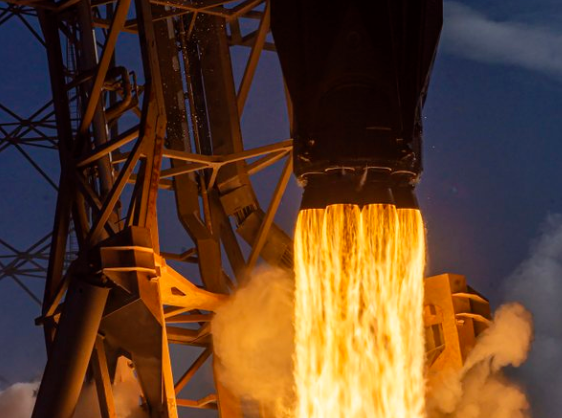Just 3 days away
The GOES-U satellite, the final addition to NOAA’s GOES-R series, is scheduled for launch into space on June 25. This event marks a significant milestone as GOES-U will lift off aboard a SpaceX Falcon Heavy rocket from Launch Complex 39A at NASA’s Kennedy Space Center in Florida during a two-hour window that opens at 5:16 p.m. EDT (2116 GMT).
For those interested in viewing the launch, Florida’s Space Coast Office of Tourism has prepared a comprehensive guide to the best local spots. The options include various beaches, parks, and restaurants near the Kennedy Space Center, offering great views of the rocket’s ascent. For those who prefer to watch from home, live coverage of the launch will be available online, starting at 9:30 a.m. EDT (1330 GMT).
The SpaceX Falcon 9 first stage completed its 250th successful droneship landing on June 20, 2024 pic.twitter.com/xFHmFuAWeQ
— Dima Zeniuk (@DimaZeniuk) June 21, 2024
Rex Engelhardt, GOES-U Mission Manager for NASA’s Launch Services Program, shared his enthusiasm with Space.com, noting that each launch offers a unique spectacle, particularly with the added drama of the booster’s return.
GOES-U, which follows its predecessors GOES-R, GOES-S, and GOES-T launched in 2016, 2018, and 2022 respectively, promises to be the most advanced yet. Equipped with sophisticated instruments, GOES-U will enhance NOAA’s capabilities in delivering high-quality imagery and atmospheric measurements. These include detailed views of Earth’s weather, oceans, and environment, along with real-time mapping of total lightning activity.
How to watch SpaceX’s Falcon Heavy rocket launch NOAA’s GOES-U satellite on June 25. https://t.co/iVFdKm8pug
— Space Launch Schedule (@SpaceLaunches) June 22, 2024
This satellite has been specifically improved based on feedback and findings from its earlier counterparts. Such enhancements are expected to boost the performance and reliability of the weather monitoring system, thereby improving weather forecasting and environmental monitoring.
The GOES satellites play a crucial role in NOAA’s mission to understand and predict changes in weather, environment, oceans, and space. Positioned in a geostationary orbit, they provide a constant vigil over the same part of the planet, allowing for a persistent eye in the sky that is vital for monitoring severe weather events like hurricanes, tornadoes, and thunderstorms.
The launch of GOES-U not only represents the culmination of the current series of geostationary satellites but also sets the stage for the next generation of environmental satellites. With each launch, NOAA has refined its technology, and GOES-U embodies the pinnacle of this evolutionary process, equipped to deliver critical data that will support weather forecasting and environmental and oceanographic science for years to come.
Latest #EarthObservation #satellite launches include PREFIRE CubeSats pair for NASA & an EO trio for China. NOAA’s GOES-U mission scheduled for launch for Tuesday. https://t.co/LAoefgXeO4 pic.twitter.com/844y739Ot9
— Pixalytics (@pixalytics) June 22, 2024
As this satellite prepares to join its siblings in orbit, the event underscores the ongoing collaboration and innovation in space technology, particularly involving partnerships between government agencies like NOAA and private companies such as SpaceX.
Key Points:
i. The GOES-U satellite, the final installment in NOAA’s GOES-R series, is scheduled to launch on June 25 aboard a SpaceX Falcon Heavy rocket from NASA’s Kennedy Space Center.
ii. The launch will be viewable from various locations on Florida’s Space Coast, with options including beaches, parks, and restaurants near the Kennedy Space Center, or online with live coverage starting at 9:30 a.m. EDT.
iii. GOES-U will carry advanced instruments for high-quality imagery and atmospheric measurements of Earth’s weather, oceans, and environment, plus real-time mapping of total lightning activity.
iv. This satellite incorporates enhancements based on experiences and data from its predecessors, aiming to improve the efficiency and accuracy of NOAA’s weather monitoring capabilities.
v. The launch of GOES-U not only completes the GOES-R satellite series but also sets the stage for future advancements in environmental monitoring and weather forecasting.
James Kravitz – Reprinted with permission of Whatfinger News



